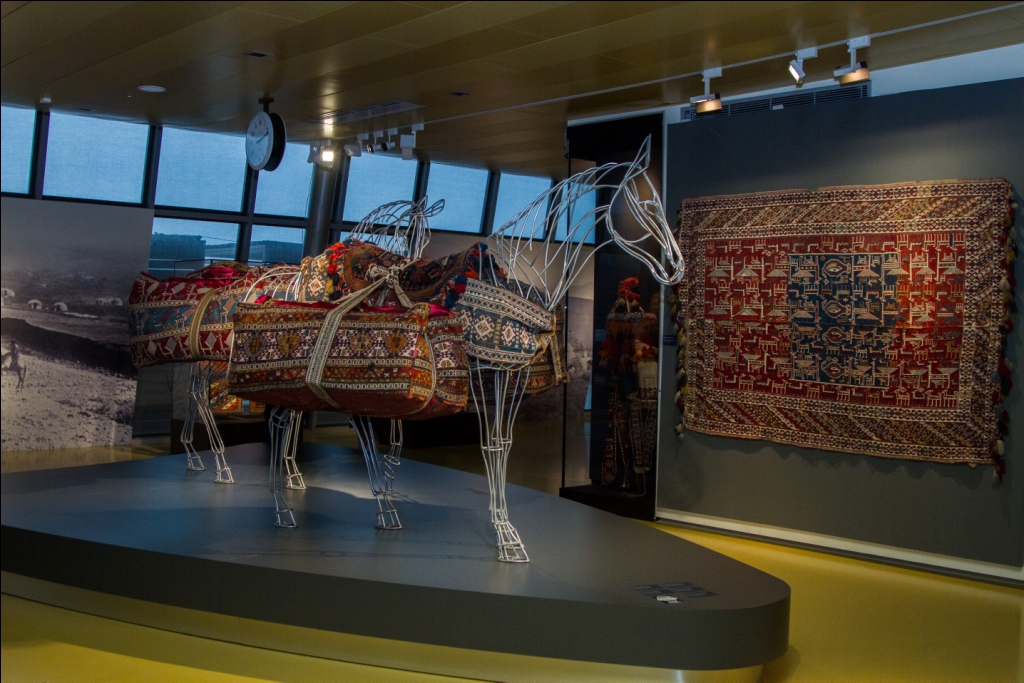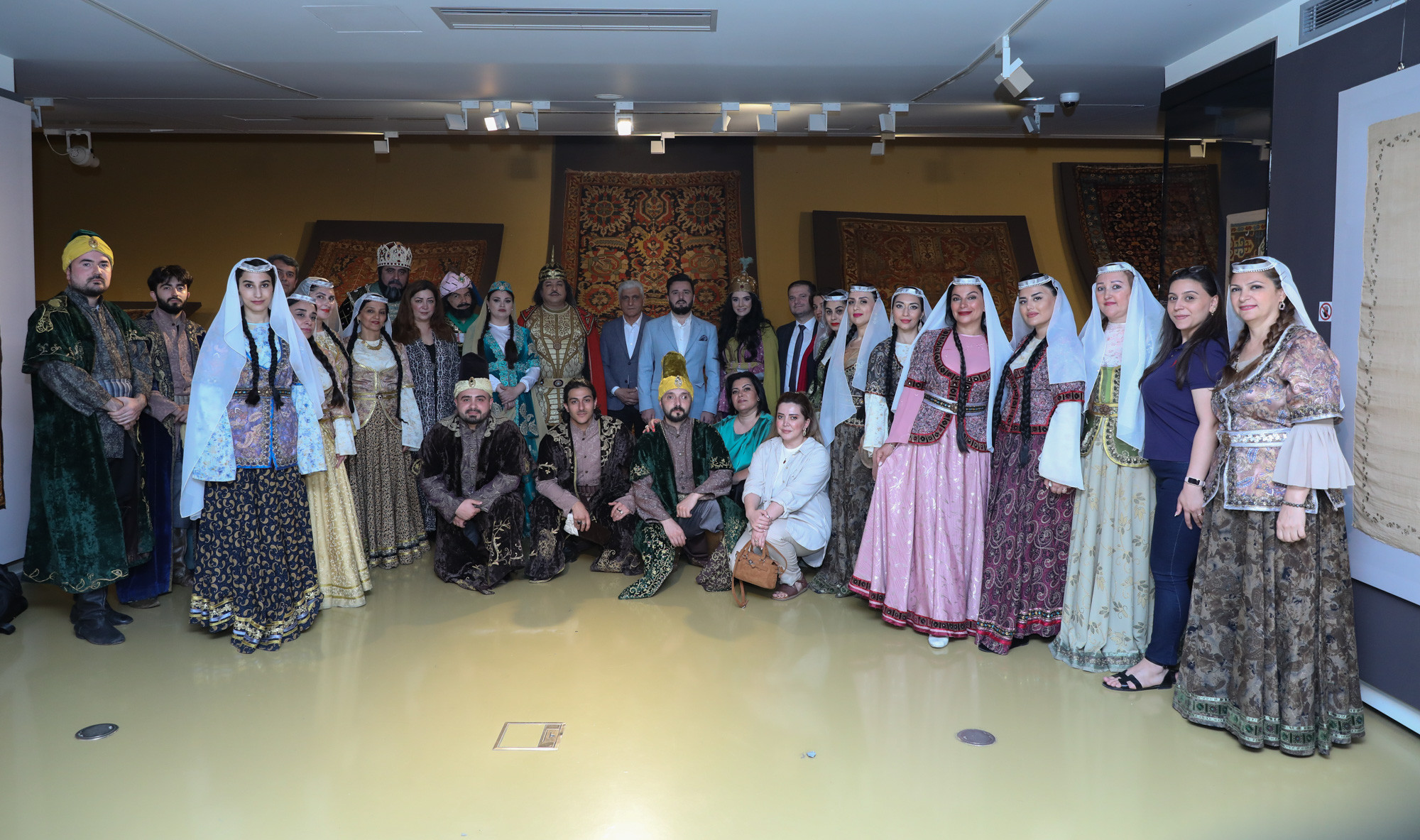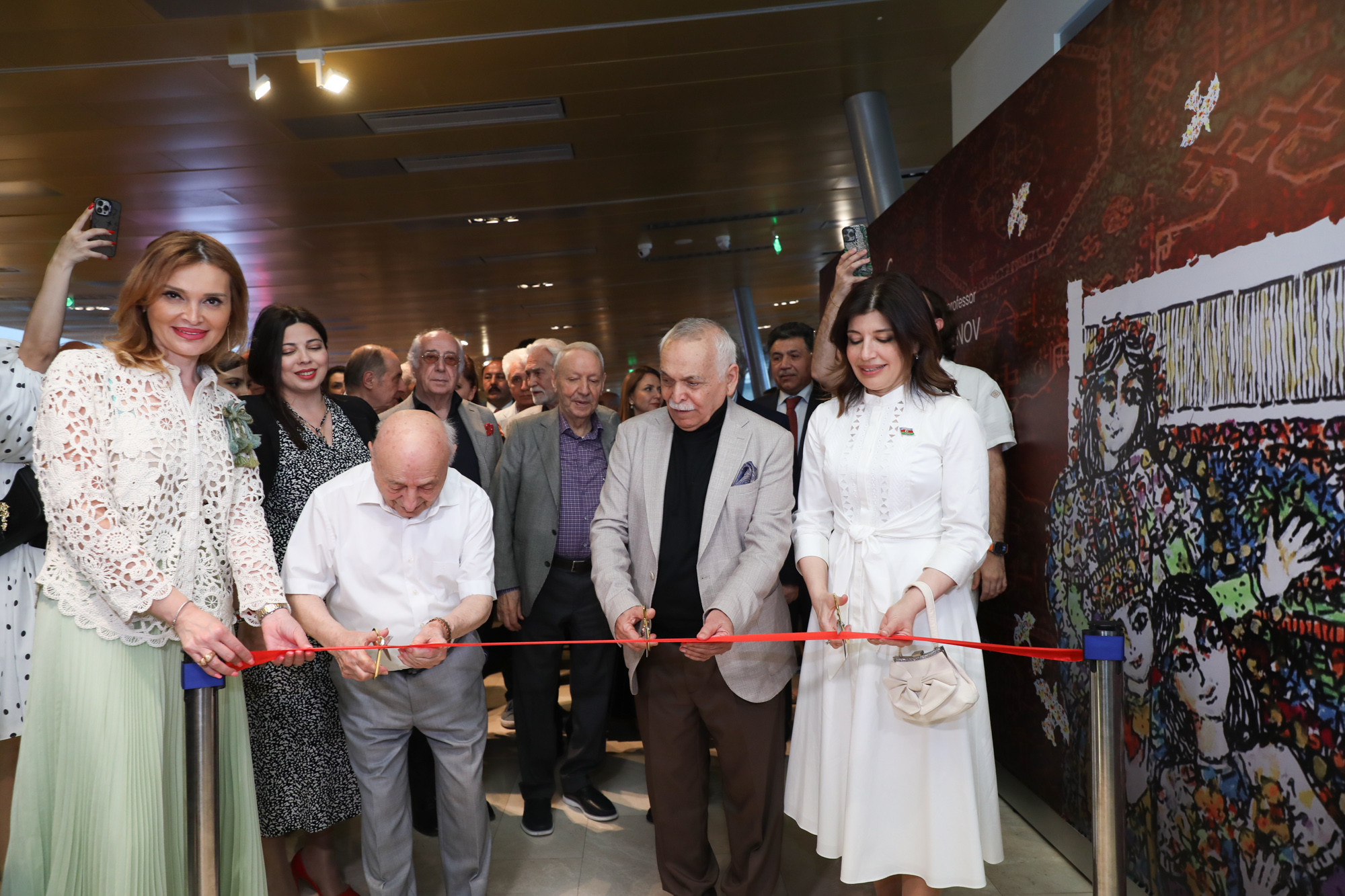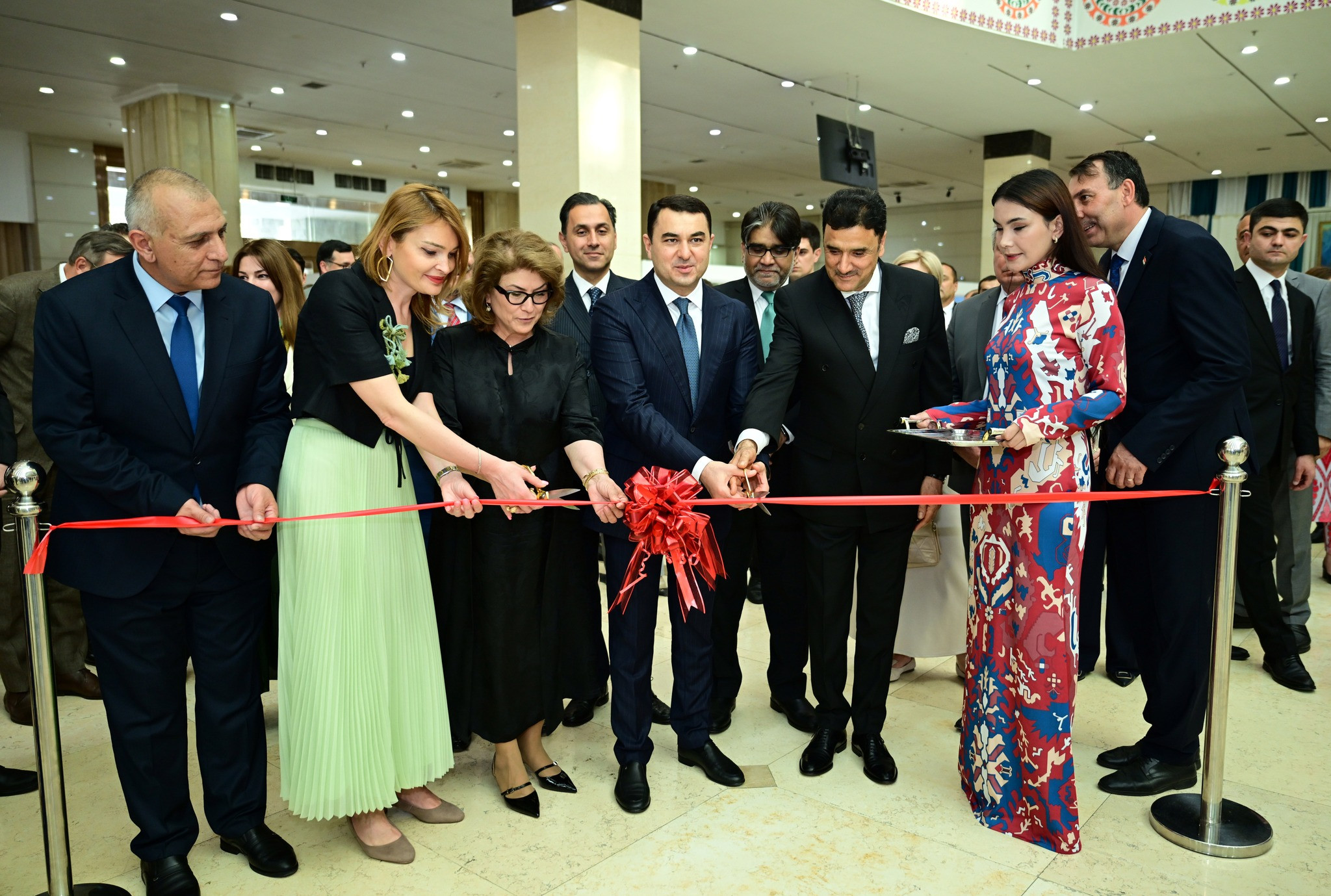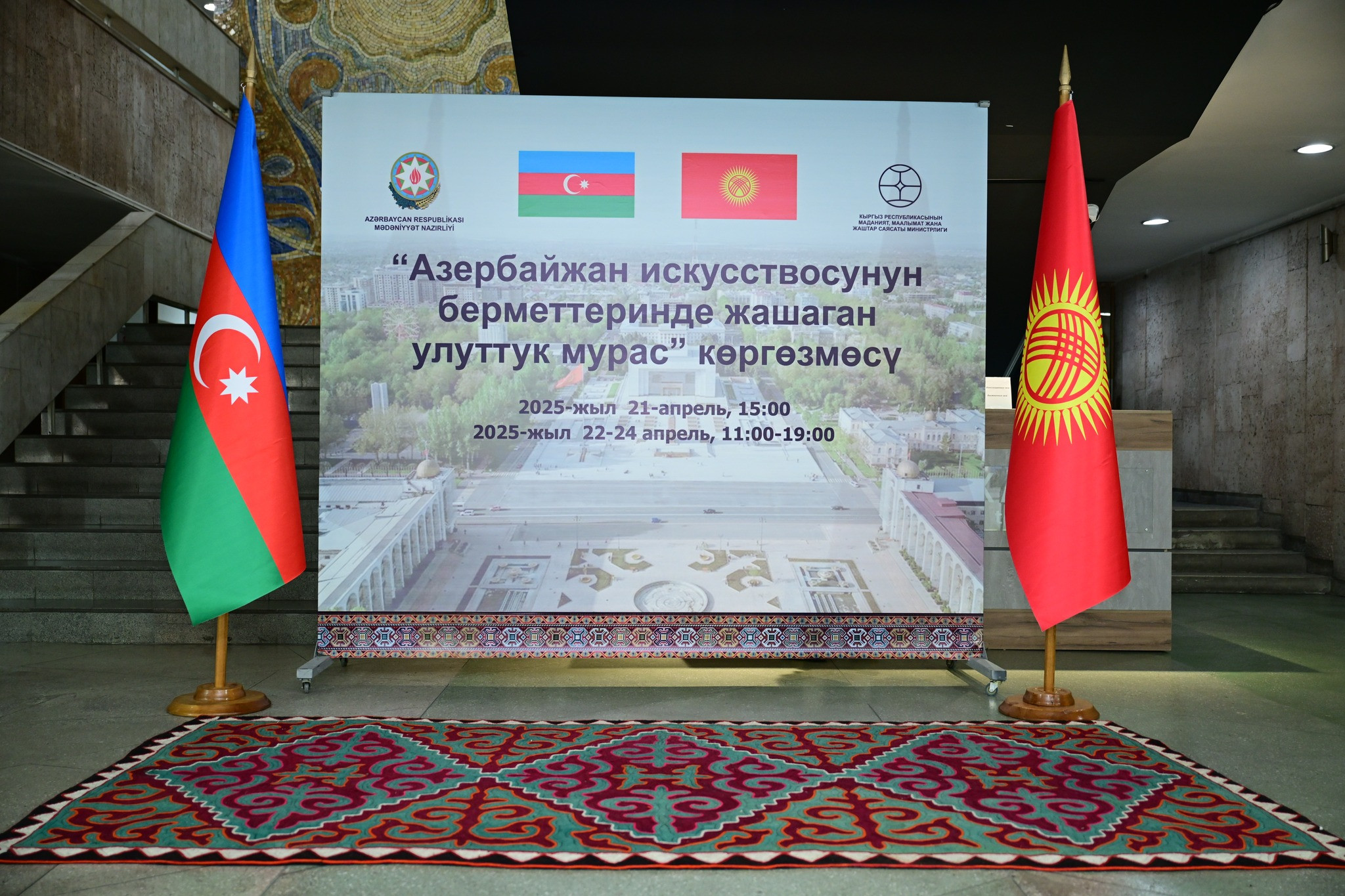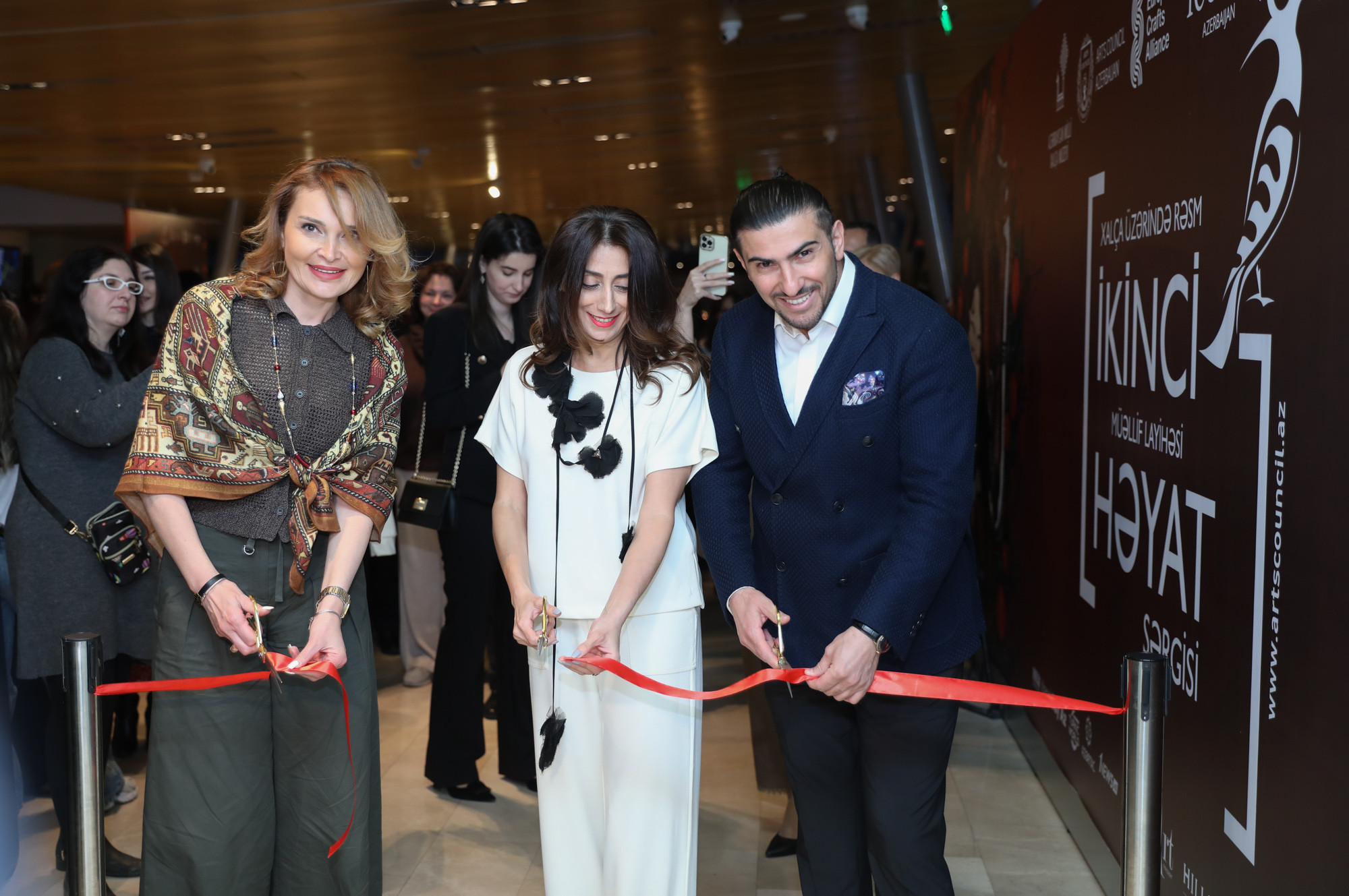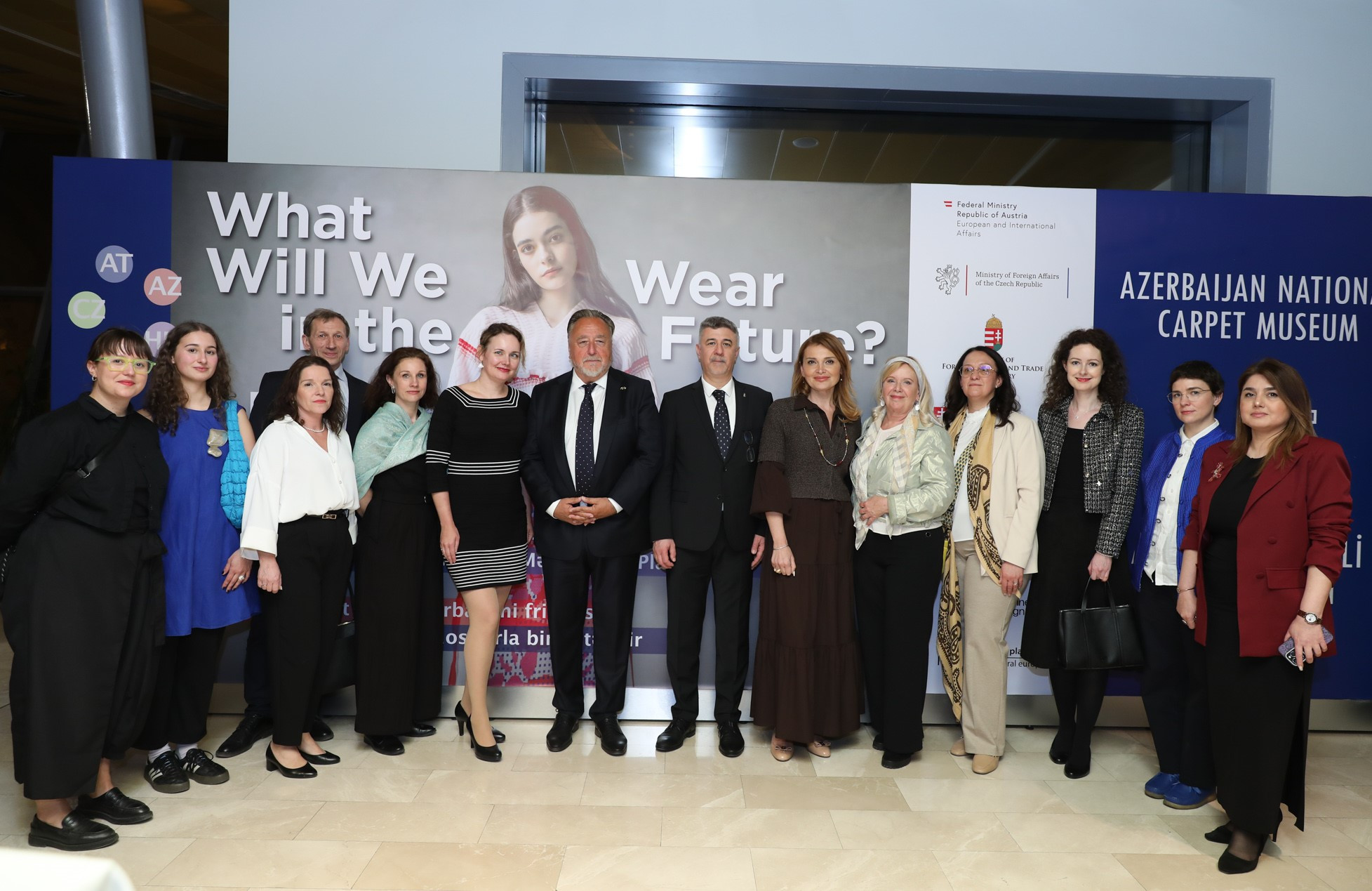1st Floor of the Exposition
The 1st floor of the exposition concentrates on the development of Azerbaijani Carpet Weaving. Beginning with the simplest type of carpet hasir (woven mat from reeds or cane), it leads to the more technologically complex and perfect forms (palas, jejim, kilim, shadda, ladi, varni, zili, sumakh). Multimedia files help trace the evolution of carpet weaving. Monitors demonstrate the technique of creating each type of flat woven carpet. Displays include horizontal and vertical looms; weaving tools for shearing, washing, and combing wool; and implements for spinning and dyeing yarn. The exposition presents archaeological finds from different regions of Azerbaijan, confirming the ancient roots of the national craft of carpet making.
Many other carpet products are also exhibited here: chul (horse cloth); khurjun (a big valise consisting of two parts); heyba (a small valise consisting of two parts); duz torbasi (a bag for salt); jorab (woolen stockings); deve bezeyi (decoration for camel); chanta (bag); sijim (a thick rope made of sheep wool, goat hair, or linen to secure loads or tie bunches of herbs); orken (narrow carpet tape for fixing the pack of goods, and to strengthen tents); gashigdan (a bag for spoons and rolling pins); mafrash (a rectangular carpet bag to store and transport bedding and clothing); yahyar ustu (rug on saddle); and chuval (sack). These items were used in the daily life of Azerbaijanis.
Special attention is given to the information about alachig (tent), which local people had set up in areas of seasonal housing. The alachig was clad in several types of carpets: the ground and walls were lined with chatan and hasir, and on top of them were placed flat woven carpets. The exterior of the alachig was covered with keche made of linen.
The final part of the exposition’s 1st floor illustrates the relationship between carpet art and the traditions of our people, Azerbaijani carpet’s place in national folklore, and its role in today’s daily life. Of special interest within this section’s photos and videos are the wedding attributes and symbols of the Novruz holiday.

